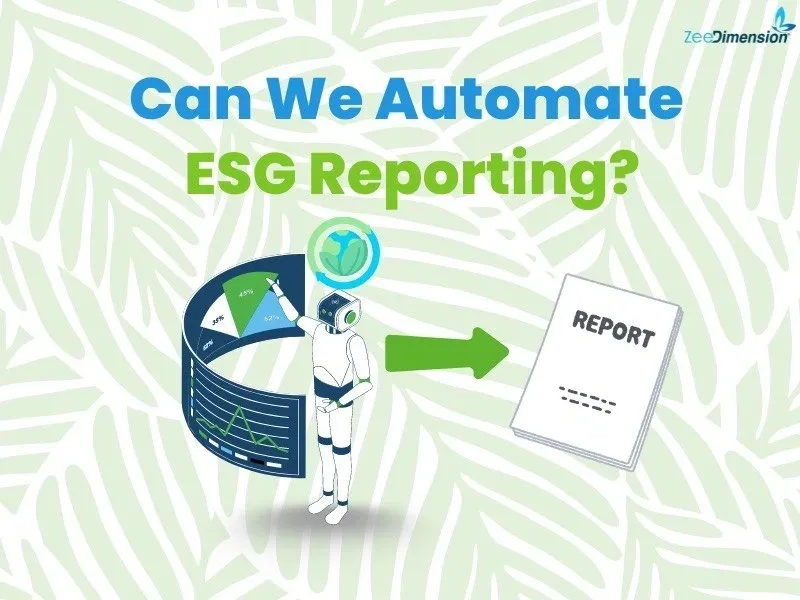
One of the most interesting questions about automation’s potential to simplify complex processes like Environmental, Social, and Governance (ESG) reporting is how it’s transforming different industries. ESG reporting has become increasingly difficult as a result of firms being under more and more demand to show that they are committed to sustainability and ethical business practices. This intricacy is frequently caused by the necessity of gathering information from various sources, making sure that regulations are followed, and maintaining open lines of communication with stakeholders.
We’ll learn how automation can streamline ESG reporting and make it more effective and accessible for businesses of all sizes as we investigate these developments. Accountability, increased stakeholder trust, and a more sustainable future for communities and businesses might all benefit from this change.
What makes ESG reporting so complex?
ESG reporting is intrinsically complicated for several reasons. First of all, it requires extensive surveillance and analysis because it includes a wide range of data from the environmental, social, and governance domains. Organizations also need to navigate some frameworks, including TCFD, SASB, and GRI, each with its own set of reporting requirements. Moreover, the information required for ESG reporting frequently originates from several departments within the company, requiring intensive integration and coordination work to guarantee accuracy and comprehensiveness.
The Role of Automation in ESG Reporting: A Look at Emerging Trends and Best Scenarios :
The use of Artificial Intelligence (AI), Machine Learning (ML), and Robotic process automation ( RPA ) to can significantly enhance ESG reporting processes. These technologies streamline data collection from diverse sources, ensuring that all relevant information is gathered efficiently. They also validate the data for accuracy and consistency, reducing the risk of errors. Additionally, they can automatically customize reports to meet the requirements of different frameworks, such as GRI, SASB, and TCFD, making the reporting process more seamless and compliant.
Scenario 1: Automated Carbon Footprint Tracking
What if we could track our carbon footprint in real time?
Consider an energy firm that tracks emissions at every facility with the help of smart sensors. Their ESG reporting system receives this data directly, which minimizes manual labor and increases accuracy.
Scenario 2: Automated Supplier ESG Assessments
How about managing your entire supply chain’s ESG data automatically?
RPA is being used by a retail chain to collect ESG data from thousands of suppliers. To keep stakeholders informed, the system creates real-time information and alerts vendors that are not in compliance.
Scenario 3: Real-Time Diversity Reporting
Can diversity and inclusion metrics be automated?
An international financial company uses automated HR tools to regularly track D&I data. For leadership teams, real-time reports on gender, ethnicity, and leadership representation are created.
Scenario 4: Automating Compliance for Multiple ESG Frameworks
What if you could comply with multiple ESG frameworks without the hassle?
A manufacturing business automates compliance with local laws and frameworks like SASB and GRI. Data is mapped to the proper forms via their ESG reporting engine, which also guarantees ongoing compliance.
What are the key challenges for ESG reporting?
Companies have several issues to deal with when automating ESG reporting. First and foremost, data availability and quality are critical; automation attempts may not succeed in the absence of solid, trustworthy data. Additionally, versatile solutions that can adjust to diverse standards are needed for alignment with multiple ESG frameworks, including TCFD, SASB, and GRI. Lastly, to ensure that the insights produced are precise and significant, human oversight is still necessary for validating and interpreting the automated outcomes.
The Future of ESG Reporting:
The future of ESG reporting will be significantly influenced by technological advancements and evolving regulations. Automation technologies like AI, ML, and RPA will streamline data collection, validation, and reporting, enhancing efficiency and accuracy, while blockchain technology will improve transparency and traceability, building trust among stakeholders. As global ESG standards become more harmonized, compliance will become easier and less costly.
Call to Action
Looking ahead to 2025, The significance of ESG reporting is undeniable. Companies that prioritize and transparently communicate their impact will be better equipped to meet stakeholder expectations, comply with regulations, and achieve sustainable success.
At Zeedimension, we are dedicated to supporting your journey towards comprehensive social value measurement. Together, we can embrace the future of ESG reporting and make a meaningful difference for our planet and its people.
Schedule a demo today to discover how we can help you measure your social good.







